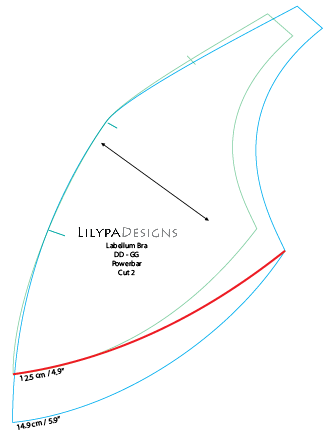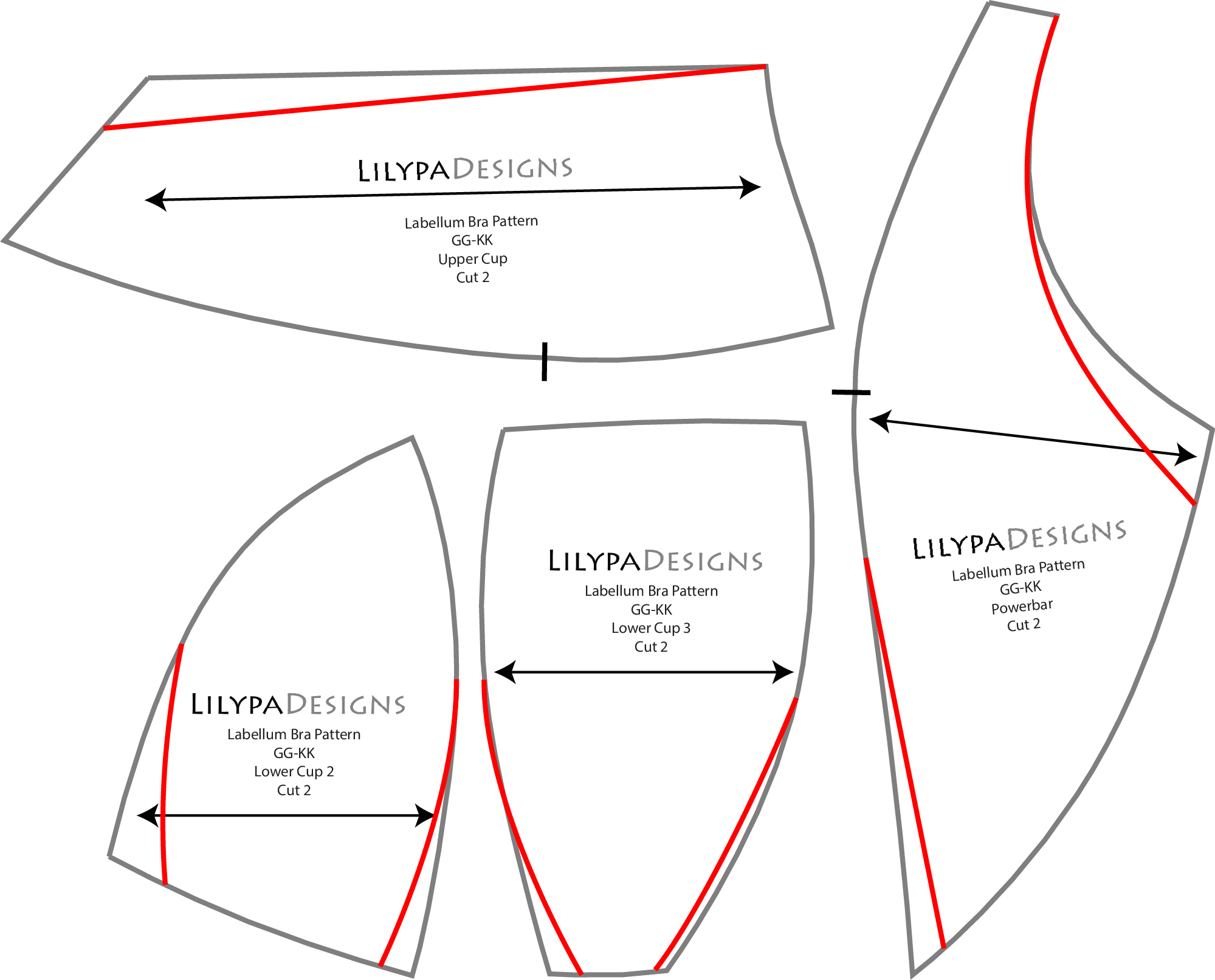Narrow Root & Omega Adjustments
What is an Omega Shaped breast?
An Omega Shaped Breast is a breast whose width is WIDER than the breast root. [For a primer on breast terminology, click HERE] From a top down view, the breast is often rounded near the bust point and tapers in toward the chest wall. This is more apparent while leaning over.
A subset of the Projected Breasts may also have narrow roots. The breast root is narrower than expected for the volume (and band size) similar to omegas, but lacks the bulbous shape. From a top down view, the breast is more tubular/torpedo shape - also more apparent when leaning over.
In retail bras, common fit issues for both include either correct cup volume with too wide wires and shallow cups. Or wires that fit well but the cup volume is too small. Breasts may be compressed against the body with skin-on-skin inside the cup. The wire may also be sitting below the inframammary crease.
One can have an Omega Shaped breast of varying degrees. If the breast root is smaller than the breast volume by 1-2 sizes, then one is likely to be projected + narrow roots. If the root is 3-5 sizes smaller, one may be omega. Extreme omega is where the breast root and breast volume differ by 6 or more sizes. One can also have omega shaped breast AND be inner full. [Additional info on Inner Fullness HERE].
Photo used with permission by M Brand Photography.
What is an Narrow Root (Omega) Adjustment?
Why is a special adjustment needed for Narrow Root/Omega shaped breasts? Can’t I just trim off the excess wireline from the cups? Short answer, no.
Cutting off the "excess" wireline at the neckline and underarm is NOT THE SAME as an omega/narrow root adjustment. Its similar to lowering the neckline and armhole of fitted tank top that’s too small in the bust in order to get it to "fit". With clothing adjustments, darts are added to create shaping and contouring - the omega adjustment is the same thing for bras. We've just make it "pretty" by incorporating the darts into existing seams (very similar to rotating bust darts).
Due to the differences between cup volume and underwire size, mixing and matching the size that best matches the body part will lead to seam lengths NOT matching up. In this case, there may be a few centimeter or several inch in difference between the wireline of the cups to the wireline of the cradle to adjust for. [How to select size HERE}
Example of two bras with same cup volume on the same body but different underwire size/shapes.
There are 2 common methods to for fitting a larger cup into a smaller cradle: gathering/pleating or adding darts. Depending on your situation, one maybe preferable to the other. Gathering/pleating can be useful during the muslin stage where speed is key and neatness, less so. Incorporating darts into the seamlines is ideal for larger size differences and a cleaner finished look.
How Do I Make an Narrow Root Adjustment?
If you making BOTH the BCD and Omega adjustments, you can do all of this in one swoop. This is fairly straightforward when using Adobe Reader. Just turn on the 2 sizes you need (and turn OFF the Seam Allowance) then draw a new curved line that reduces the height (BCD) while maintaining the width (HH). [Full Instructions for Altering the BCD HERE].
Then add darts to the wireline to reduce the total length. If you made a muslin, you can measure the difference between the cup and the cradle. If you haven’t made a muslin, you can measure the length of the wireline of the cup compare it to the wireline of the cup. The difference is what you need to remove via incorporated darts. Note that in my patterns, the vertical seam of the lower cup needs to match up with the vertical seam of the cradle.
This omega alteration method can be applied to any number of bra patterns using the formula:
difference (between wireline lengths) / #of seams.
All that is left is to “walk” the altered seamlines to make sure they all match up and add the seam allowance back on!
Adjustments for Extreme Omega Shape
EXTREME omega - major differences (in excess of 6 sizes) between the breast volume/horizontal hemisphere and the wire size may need additional alterations.
If you are VERY omega shaped (6 or more size difference), you may also need to take some length out of the wireline from the neckline of the upper cup AND the powerbar as well as extending the length of the darts themselves.
In the case of an extreme omega, incorporated darts is the ONLY method recommended due to the major differences in wireline lengths of the cup vs the cradle.
EXTREME omega - major differences (in excess of 6 sizes) between the breast volume/horizontal hemisphere and the wire size may need additional alterations.
Note that the incorporated darts are longer - at least half the distance of the seam itself in the lower cups and the full length in the neckline and underarm sections.
Also note that the HH seam of the upper cup is left untouched. Too much curve at this line can create odd bulges.
Removing length from the wireline of the upper cup will also lengthen the neckline. You may need to add a dart (slash and hinge at bust point) to compensate.
This omega alteration method can be applied to any number of bra patterns using the formula:
Difference (between wireline lengths) / # of seams.
As usual, true the lines before adding seam allowance back on.
This basic narrow root/omega adjustment will get the cup to match your measurements but may not match shape-wise (aka Volume distribution).
If you have lots of inner fullness (cleavage without pads, symmastia, breast has square-ish top down view, etc) additional adjustments may also be needed. We HIGHLY recommend making paper cups to check shape, projection and inner fullness before moving on to fabric. Checkout out Inner Fullness Adjustment HERE.











